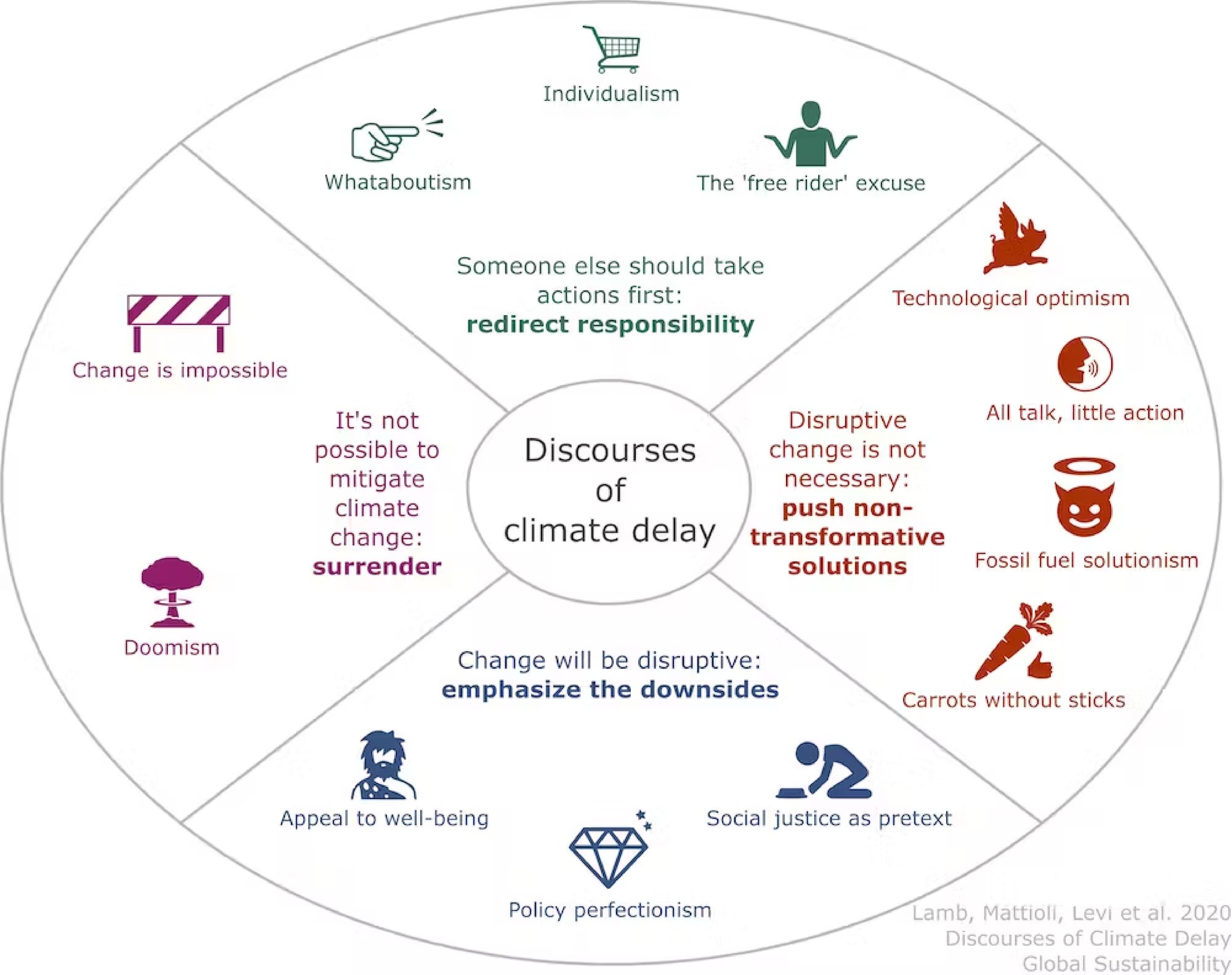Photo by Guillaume de Germain on Unsplash
Denial isn’t just a river in Egypt, and denial of the human role in climate change isn’t the only way that effective action on climate change is opposed. In The New Climate War, climate scientist Michael Mann describes more subtle methods that have been almost as effective: downplay, deflect, divide, delay, and doomism.
Downplaying involves diminishing estimates of future impacts of climate change or the role of climate change in current catastrophes. For example, the recent increase in wildfires is attributed to forest management rather than climate change (as if it can only be caused by one or the other).
Deflection tries to divert attention from effective climate policies by calling for personal action to reduce emissions, knowing that personal sacrifice is not sustainable and rarely popular. While personal action gives credibility to climate policy advocates and can make a difference, it is no substitute for federal mandates and standards, subsidies for carbon-free technology, or a price on the carbon content of fossil fuel which incentivizes utilities and manufacturers to provide carbon-free energy and products for consumers. Personal action and policies for structural change are both necessary, and can complement each other.
By driving wedges between climate activists, division fragments climate action so that effective climate policies lack sufficient advocacy. Division can be between personal action and climate policies, between different personal actions (diet, transportation, plastics, clothing), between different climate solutions (nuclear energy, wind energy, hydroelectric, trees, degrowth), or between different climate policies (pricing, subsidies, regulations). For example, in Washington State, I was involved with Initiative 732, which put a price on fossil carbon in exchange for reduced sales and B&O taxes. After collecting enough signatures to put I-732 on the ballot, we were shocked to learn that the Sierra Club opposed it because it wasn’t their climate policy. That opposition, combined with opposition from big oil, sunk it.
False solutions delay the implementation of effective solutions. Carbon offsets permit purchasers to keep on emitting and do little to remove carbon from the atmosphere because the cheapest use of the revenue is to plant trees, which release carbon dioxide when they burn as the world warms. Carbon Capture and Storage promises to separate carbon dioxide from power plant exhaust to sequester it deep underground, but it only works in special places, and won’t be economically viable without either government aid or a substantial price on carbon. Geoengineering balances the global warming by greenhouse gases with global cooling by particles injected high into the atmosphere, but the spatial distributions of the warming and cooling differ, leading to shifts in the distribution of rainfall, with consequential impacts on water resources; moreover, the ‘solution’ only hides the problem, as the injected particles fall out of the atmosphere within a year, while carbon dioxide lasts much longer.
At a recent STEM-Robotics event for Fourth Graders, a ten-year-old girl broke my heart when she told me a friend said we’re all going to die in two days. Doomism is worse than any of the above obstacles because it removes all motivation for action. As I’ve written in previous issues of Tumbleweird, climate change is a continuum. Climate impacts are proportional to cumulative carbon emissions so, no matter how slow we are to reduce emissions, there will always be additional impacts that we can avoid by taking action. Most doomers actually care very much about preserving our climate but have been confused by interpretations of a 2018 report to mean we had twelve years to save the planet when it really said we have twelve years to cut emissions in half to stay on the path to limiting warming to 1.5°C. As Michael Mann says, our situation is one of urgency (we do have to act quickly) and agency (our actions matter a lot). So, in many cases, doomism is a self-inflicted ‘own goal’.
There are other instruments of climate delay not described above or in The New Climate War. An internet search for “discourses of climate delay” will find a variety of illustrations of more. Which of these do you recognize?

What, then, shall we do about these challenges to effective climate action? Mann recommends a four-point battle plan for The New Climate War:
- Disregard doomsayers.
- Support our children’s leadership on climate change.
- Educate yourself and others on the availability of effective climate change solutions.
- Advocate for systemic change (i.e, behavioral change and technology incentivized by policy).
Which of these will you commit to?
Climate scientist Steve Ghan leads the Tri-Cities chapter of Citizens Climate Lobby @steveghan1 steveghan.wordpress.com


